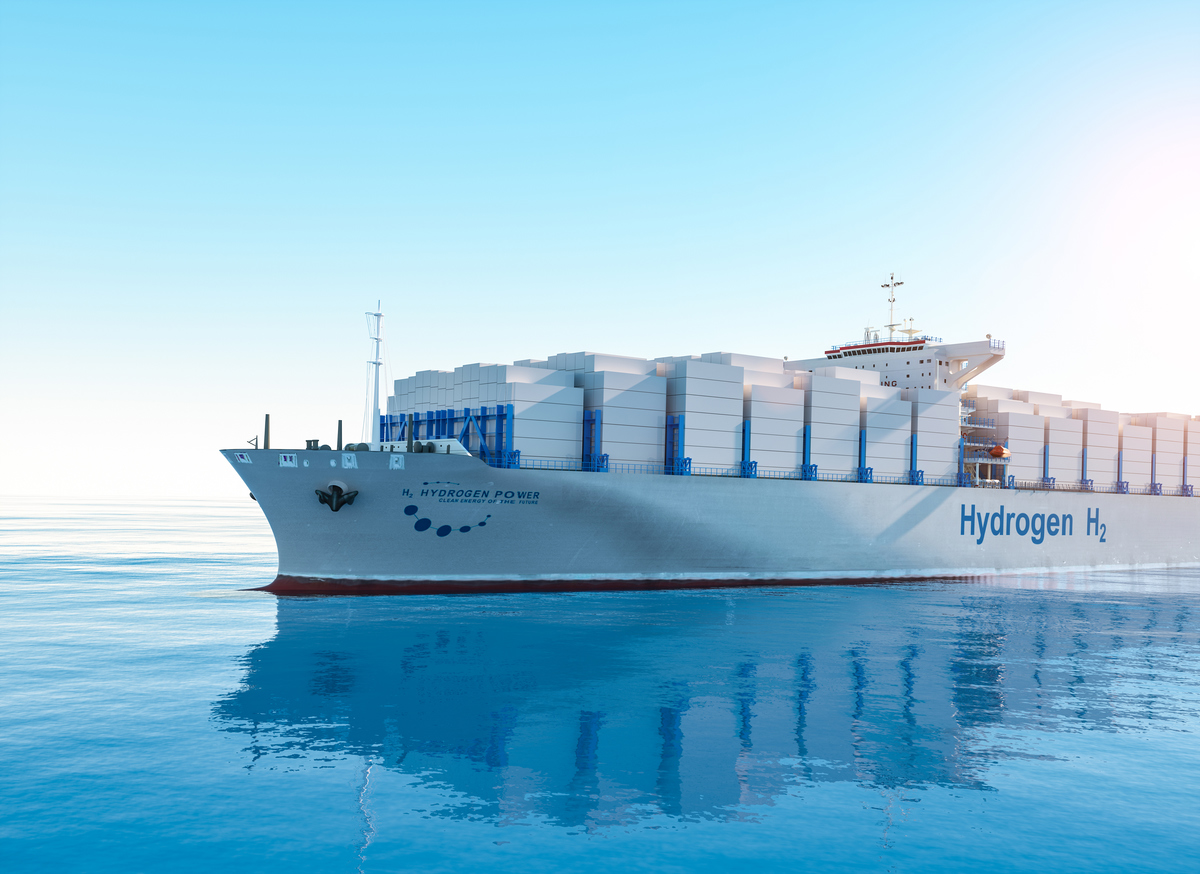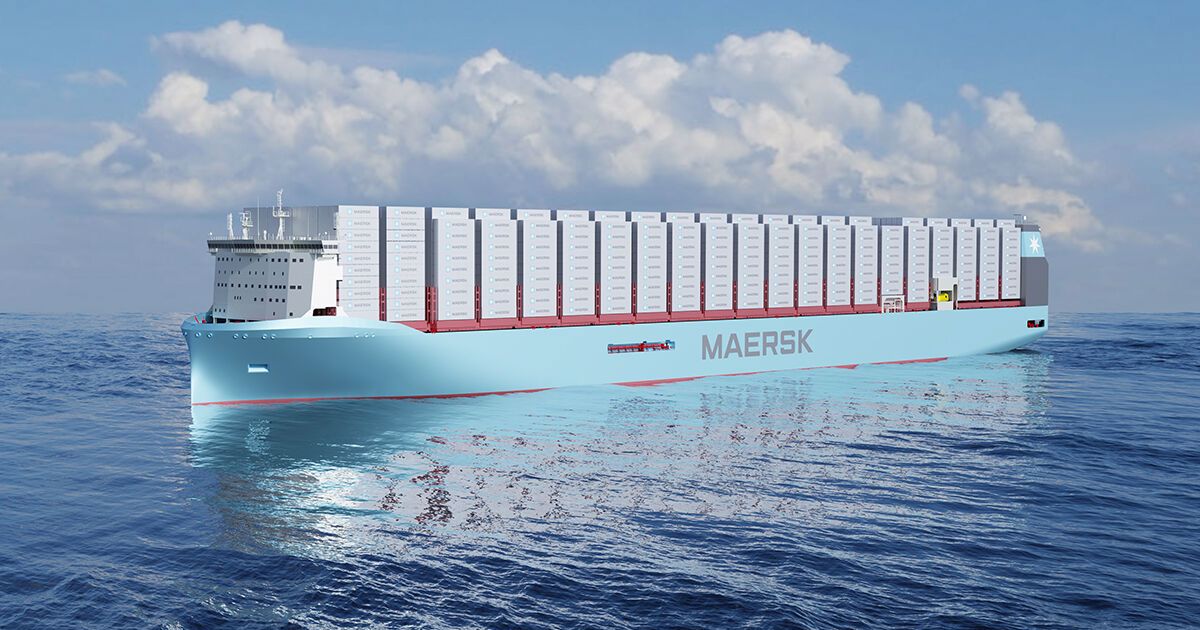Recap 2022: The Year in Alternative Fuels
Whether it was developing fuel cells or internal combustion engines, investing in alternatively-fuelled ships or carbon capture technologies - several maritime companies made tangible steps this year to reduce their future carbon footprint. Here's what's been happening in alternative fuels in 2022.

PHOTO: Prototype of a hydrogen-powered vessel. Getty Images
“Global warming is a climate emergency, and all sectors, including the maritime industry, must take immediate collective action to reduce emissions in line with the Paris 1.5°C trajectory,” said a report from the Mærsk Mc-Kinney Moller Center for Zero Carbon Shipping (MMMZCS).
It urged the shipping industry to cut greenhouse gas (GHG) emissions by 45% in 2030 compared to 2010 levels, and get to net zero by 2050.
The International Energy Agency (IEA) called the global energy crisis a "historical turning point" for the transition towards renewables, and that CO2 emissions will peak in 2025 as a result of massive government spending on clean fuels in response to Russia's invasion of Ukraine.
Shipping almost in EU ETS
It was the European Union that took the lead on the regulatory front this year, while the International Maritime Organisation (IMO) failed to take a tougher stance even as opposition to a global net zero target for shipping is dwindling.
Back in June, the European Parliament agreed that the maritime sector will have to reduce the GHG intensity of the energy used on board ships by 2% by 2025, 20% by 2035 and 80% by 2050, compared to 2020 levels. In December, all three of the EU bodies reached a provisional deal to include shipping emissions in the EU Emissions Trading System (EU ETS) from 2024, with progressively fewer CO2 emission allowances in the following years.

PHOTO: Green hydrogen storage tank. Getty Images
Fuelling the green requirements
Supply-side developments were another major theme, and they brought good news for shipping. All kinds of zero- and low-carbon marine fuels were in the spotlight, from hydrogen and its derivatives to LNG and biofuels, and several shipping giants initiated projects to create green bunkering supply chains and stimulate future production of renewable marine fuels.
Norwegian fertiliser company Yara and a group of other companies pledged to offer ammonia bunkering in Scandinavia by 2024, and Singapore's port authority and other firms are committed to establish an ammonia bunkering supply chain in Singapore by 2027. Danish A.P. Møller – Mærsk signed multiple deals to develop green methanol bunkering for its upcoming methanol-fuelled fleet around the world, and Topsoe teamed up with the Port of Gothenburg and Ørsted to develop Europe's largest green e-methanol plant.
The Port of Rotterdam made headlines when it announced it aims to supply Europe with 4.6 million mt/year of hydrogen by 2030. Kanfer Shipping dominated LNG bunkering updates with deals from Egypt to Brazil to Panama.
Green shipping corridors are prioritised
2022 saw a lot of focus on decarbonising shipping routes from start to finish, which includes both onshore infrastructure and vessels.
As part of the Silk Alliance, a group of shipping companies including Mediterranean Shipping Company, Pacific International Lines, engine manufacturers and financial institutions worked out plans to create a "highly scalable" green corridor for container ships sailing in Asia. It is aims to boost uptake and production of green marine fuels. A consortium led by the Global Maritime Forum and players from the mining and bulk carrier industries launched a project for an Australia-East Asia green corridor, with ammonia as a likely fuel.
The MMMZCS partnered with port authorities in Rotterdam, Hamburg, Gdynia, Roenne and Tallinn to establish a green corridor network across Europe. The Port of Rotterdam signed multiple green corridor agreements, including an agreement with Singapore's port authority to create the world's longest green shipping corridor by 2027.

PHOTO: Model of Mærsk's 17,000 TEU methanol-powered container ship. A.P. Moller-Mærsk
Methanol and ammonia gain popularity as rivalry intensifies
As future with renewable potential, ammonia and methanol were neck-and-neck in 2022.
The IEA, the International Renewable Energy Agency (IRENA) and the classification society DNV all projected ammonia will be the top candidate to decarbonise shipping in the long term. The IEA forecasts that ammonia bunker demand will make up 45% of total bunker demand by 2050. The MMMZCS projects that low-carbon fuels such as e-methane, e-ammonia, blue ammonia and bio-methanol will play a significant transitional role to curb shipping emissions before the industry ultimately switches to green hydrogen and ammonia.
Meanwhile, methanol advocates were unfazed by optimism surrounding ammonia. Auramarine’s chief executive John Bergman called methanol among the “most accessible clean fuel alternative, with more than one hundred ports worldwide already supplying the fuel.” One of the biggest champions of methanol has been Mærsk, which signed deals with nine producers to source methanol for the 19 methanol-ready vessels it has on order for deliveries in the middle of this decade. Engine manufacturer MAN Energy Solutions expects a third of its dual-fuel ship engine orders to be methanol in “a few years”.
Ports shore up their power efforts
In light of the sheer number of ports rolling out shore power, a proliferate headline-grabber was shore power. Shore power is the process of providing electrical power from an onshore power station to a ship while it is docked, enabling the ships to turn off auxiliary engines and reduce its emissions.
Many ports around the world bet on shore power to reduce ships' carbon emissions when docked at their ports, from smaller ones like Quebec and Montrose in Canada to larger ones like Amsterdam.
By Konica Bhatt
Let’s also take a look at our selection of five top alternative fuels stories from the last week of 2022:
Fjord Line to rebuild LNG-powered vessels to dual-fuelled due to high prices
Hafnia will add four dual-fuel LNG tankers to its fleet by 2024
Germany awards funds for three LNG bunker barges – Handelsblatt
Kanfer Shipping and CB Fenton will establish LNG bunkering in Balboa, Panama
Hyundai Heavy Industries' 100% hydrogen engine closer to becoming a reality by 2025





